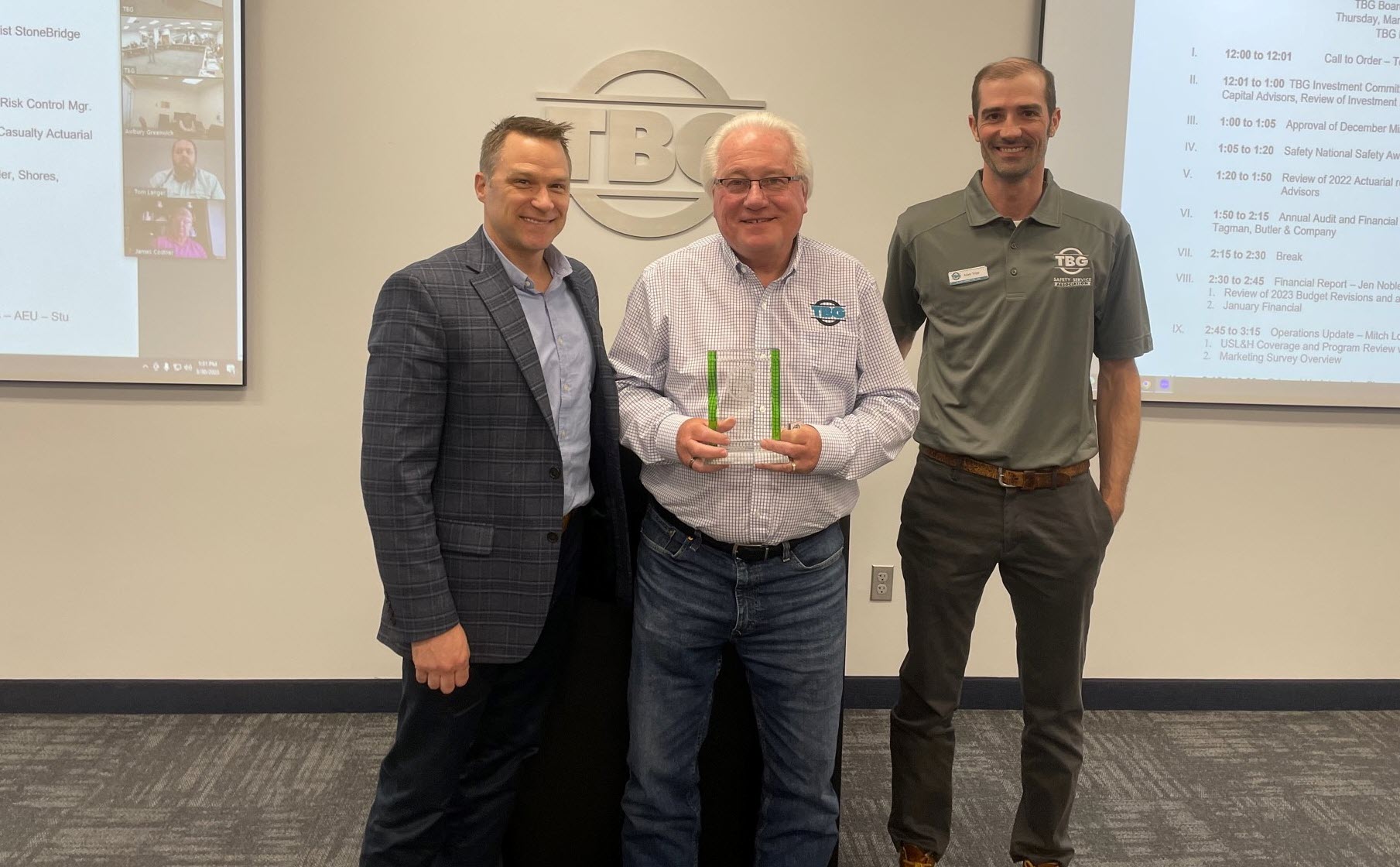

1st Place:
TBG – The Builders Group of Minnesota
Implementing Exoskeleton Systems to Reduce Lifting-Related Injuries
The problem:
The Builders Group of Minnesota (TBG) is a self-insured workers’ compensation group, comprised of roughly 700 members, focusing on construction-related businesses in Minnesota. Many of the construction members perform ergonomically challenging tasks, creating a significant exposure to shoulder, neck and upper extremities injuries. Over the last six years, roughly 36 percent of all lost time, medical and notice-only injuries have been directly related to sprain and strain injuries, equating to approximately $10 million in total incurred costs.
The solution:
Training nearly 4,000 members a year with hundreds of training sessions, the implementation of additional Hilti exoskeletons systems will assist in reducing or eliminating some manual material handling exposures that are necessary to perform essential tasks in the field. The availability of multiple exoskeleton systems for members across Minnesota also shortens the technology’s training and adoption timeline. The group anticipates the direct and indirect cost savings associated with injury prevention to exceed tens of thousands of dollars.

2nd Place:
BJC Healthcare
Using Motorized Stretchers to Enhance Safe Patient Handling Techniques
The problem:
The Patient Transport Department at Barnes-Jewish Hospital consists of 106 employees responsible for transporting patients across the Washington University Medical Campus for diagnostic tests, procedures and treatments. Patient transport employees encountered injuries from a lack of safe patient handling equipment to move patients and manually pushing patients in beds or stretchers across campus. After each incident, the department performed injury investigations, noting that additional equipment was necessary to minimize strains and sprains.
The solution:
To prevent work-related and patient handling injuries, the department added 22 motorized stretchers and beds, which facilitate easier patient transfers and reduce strain. Additionally, injury reduction helps to maintain appropriate staffing levels and boost employee morale. Through proper safe patient handling techniques and the use of motorized stretchers, the department expects a 10 percent reduction in injury frequency, potentially impacting 560,000 patient encounters.
3rd Place:
Covenant Logistics Group
Applying Trailer Door Safety Straps to Minimize Musculoskeletal Injuries and Fractures
The problem:
Covenant Logistics Group is a multi-faceted transportation and logistics company, offering solutions that assist customers in engineering value-driven supply chains to deliver products quickly, cost-effectively and seamlessly. Partnered with Dollar General, the group provides dedicated drivers responsible for transporting products from distribution centers. Loaded trailers are often packed with lighter items on the bottom and heavier items on top, resulting in many musculoskeletal injuries and fractures from drivers opening trailer doors and heavy cargo falling on top of them. In the first quarter of 2021, the group reported 11 workers’ compensation claims on the Dollar General account, with a total incurred cost of over $240,000.
The solution:
Trailer door safety straps were installed on the outside of both trailers doors, allowing drivers to open the doors a short distance, but providing enough space for falling freight to drop to the ground or between the doors instead of on the employee. The group’s safety department also developed a training program and video as part of the orientation process for new hires and drivers on the Dollar General account. In the second quarter of 2022, the group reported savings of over $220,000 in incurred costs associated with their workers’ compensation claims. In addition, all employees recovered from their injuries and were able to return to work in a full-duty capacity.
